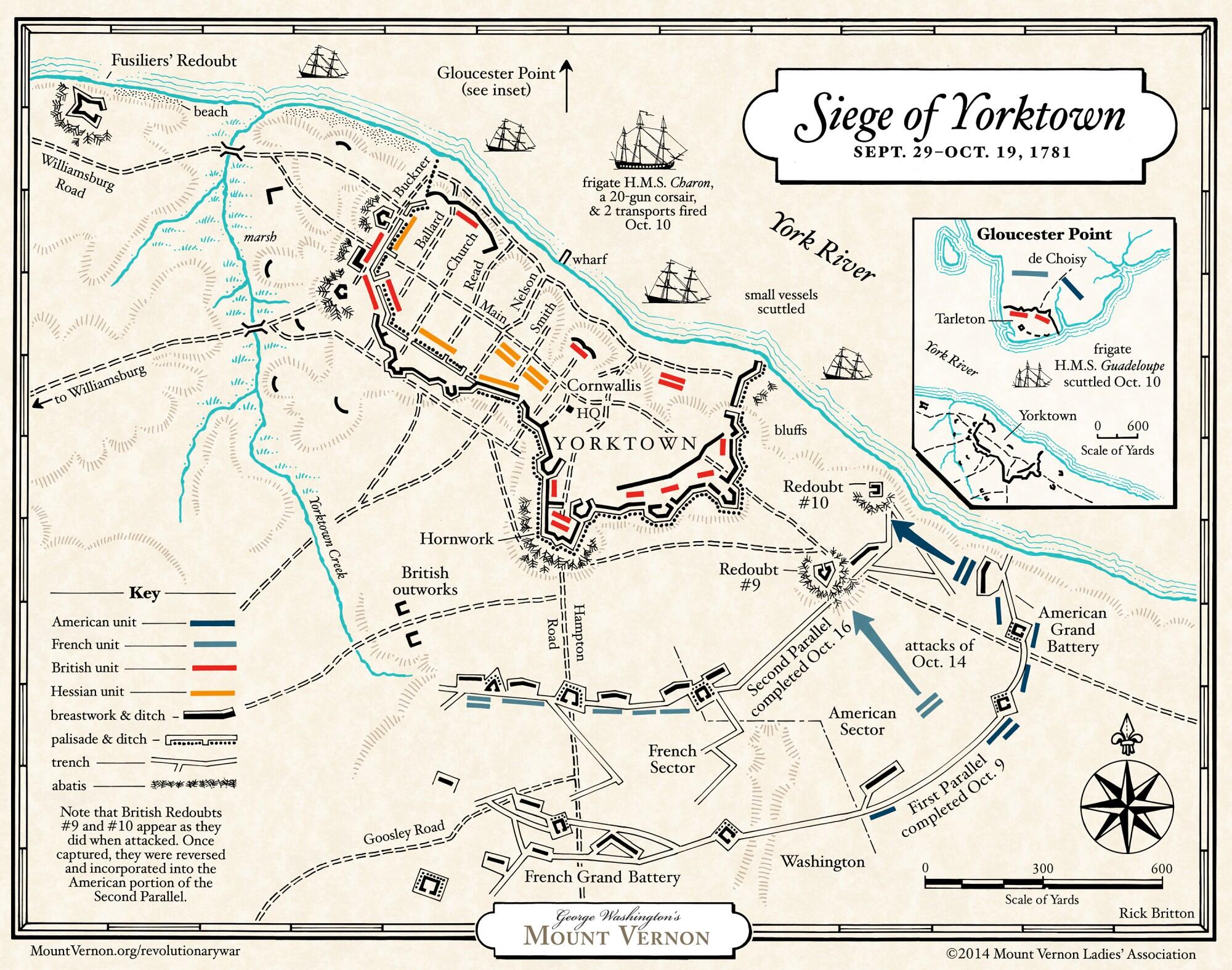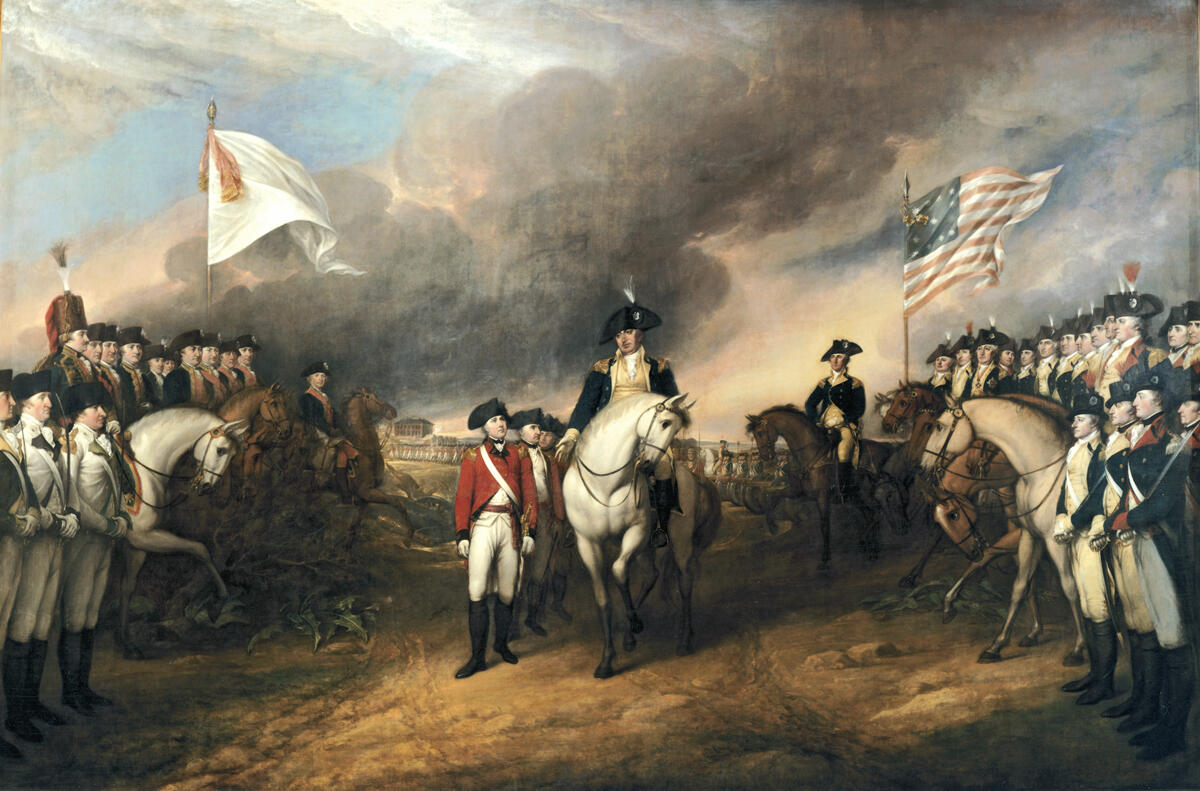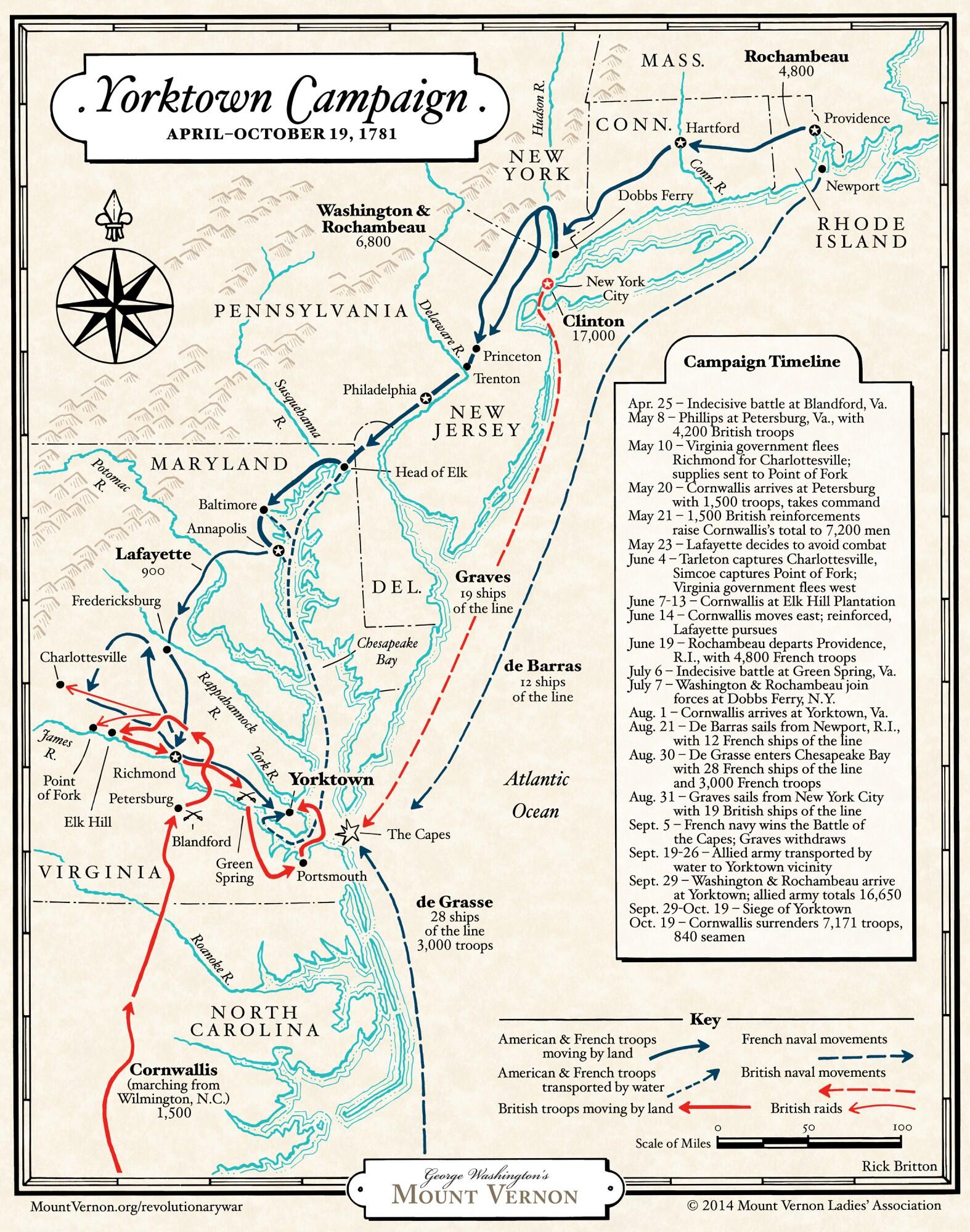The Yorktown Campaign assured that the United States' efforts to gain independence from Britain would succeed, and also increased General George Washington's fame as a result of his involvement in orchestrating the triumph.
The British southern army, led by General Charles, Earl of Cornwallis, was besieged by Washington's Continental Army, which was reinforced by French land and naval forces.
The siege of Yorktown that followed forced Cornwallis' capitulation and enforced the start of real negotiations that resulted in the Peace of Paris recognizing American independence. With such an unlikely success, Washington's popularity swelled to international proportions, interrupting his much-desired Mount Vernon retirement with more summons to public service.
The success of Cornwallis' southern campaign exacerbated Washington's already serious concerns about the health, pay, and morale of his Continental Army stationed outside of New York City by 1781. The Americans were left destitute of cash, soldiers, and morale after Cornwallis' tactical success at Guilford Courthouse (March 15, 1781). In addition, after the attempted surrender of his command at West Point, former Major General Benedict Arnold, a freshly minted British Brigadier, prepared for Cornwallis' arrival by burning valuable Continental supplies in Virginia. Washington had little choice but to watch and wait for an opening to assault New York, or for a British blunder.

Map: The Siege of Yorktown. (Mount Vernon Ladies' Association)
The opportunity presented itself when Cornwallis entrenched his army at Yorktown and Gloucester Point on the peninsula of Virginia's York and James Rivers, with the expectation of reinforcement or evacuation. Washington abandoned his preference for action against New York City upon the advice of French Lieutenant General Jean-Baptiste-Donatien de Vimeur, Comte de Rochambeau, and proceeded south against Cornwallis. Washington and Rochambeau swiftly moved southwards while coordinating with elements of the Continental Army located in Virginia under the command of Major General Marie Joseph Paul Yves Roch Gilbert du Motier, Marquis de Lafayette, and the French Navy under Admiral Francois Joseph Paul, Comte de Grasse. Lafayette fixed Cornwallis in place while de Grasse kept control of Chesapeake Bay, preventing British naval assistance through his victory at the Battle of the Capes (September 5, 1781). In the process, Washington's combined Franco-American army transported from Head of Elk to the lines outside Yorktown.
On September 14, 1781, as reported by Captain Benjamin Bartholomew, "his Excellency Genrl. Washington arrived at 5:00 P.M. when there was twenty one pieces of Canon fired, he review'd the Troops."1 Washington's southward journey included a visit to his beloved Mount Vernon, his first since the war began six years earlier, before arriving outside Yorktown to supervise the construction of the Franco-American lines. With the opening of forty-one Allied guns on October 9, 1781, Cornwallis' position, already tenuous, was made so indefensible that surrender negotiations started less than a week later on October 17.

The surrender of the British forces at Yorktown. Painting by John Trumbull (US Capitol)
The surrender of over 7,000 British troops on October 19, 1781 did not end the war. The end came in 1783 after Washington moved back to New York City, with the Peace of Paris signed by a British government installed largely as a result of Washington's victory. Victory at Yorktown, however, brought Washington the increased political clout needed to avert a potential officers' rebellion at Newburgh, conduct the remainder of the war, and after a short retirement to Mount Vernon was the logical choice to oversee the Constitutional Convention and become the first President of the United States.
Russell S. Perkins
Grantham University
Notes:
1. Benjamin Bartholomew, "14 September 1781," Marching to Victory: Capt. Benjamin Bartholomew’s Diary of the Yorktown Campaign, May 1781 to March 1782, ed. E. Lee Shepard (Richmond, VA: Richmond Historical Society, 2002), 22.
Bibliography:
Bartholomew, Benjamin. Marching to Victory: Capt. Benjamin Bartholomew’s Diary of the Yorktown Campaign, May 1781 to March 1782 ed. E. Lee Shepard. Richmond, VA: Virginia Historical Society, 2002.
Ellis, Joseph J. His Excellency: George Washington. New York: Alfred A. Knopf, 2004.
Ketchum, Richard M. Victory at Yorktown: The Campaign that Won the Revolution. New York: Henry Holt, 2004.














